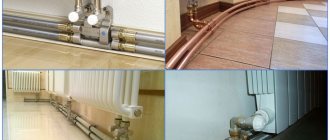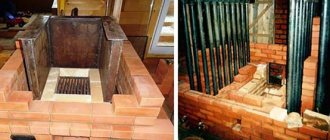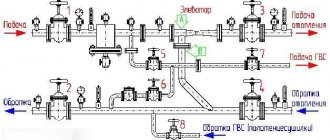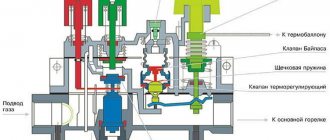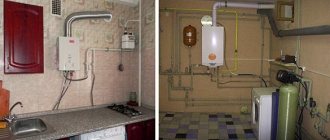The term “smart home”, which recently surprised society, is quite commonplace today. Actually, if we consider the level of household appliances used in almost every home, we can draw an unambiguous conclusion - the degree of automation is very high.
It is not surprising that automatic control also affected heating in a smart home, which, thanks to innovation, has become significantly smarter. Let's take a closer look at this option in order to get to know the device and all the advantages of smart heating.
How smart heating works
The heating system of an apartment or country house includes not only radiators, but also various types of convectors, heated floors, and heated towel rails.
Recently, the option of warm walls that heat the air in the room in winter and cool it in summer has become popular. This entire set, and in a country house, devices responsible in one way or another for heating, can be controlled separately or in combination.
The control system can be a single computer unit that controls appliances in the house and temperature sensors in rooms and outside.
The system analyzes the sensor readings, and if the temperature differs from that set in the program, it gives a command to work. The temperature regime comfortable for staying in the house is set individually by the owner.
Smart heating can be economical, but subject to a number of conditions. So, the temperature in the house is affected not only by the weather outside the window, but also by other factors that influence the climate in the house, namely:
- thermal conductivity of walls and ceilings;
- quality of windows installed in the house;
- quality and sufficient protection of the front door;
- heat supply method;
- type of heating system in the house;
- the presence of dampness, drafts, and so on.
And even the smartest system will not work with proper efficiency if the causes leading to heat loss are not eliminated to the maximum. If the walls are not sufficiently protected, the system will heat the air, and you will lose the money spent on its operation.
Of course, in this case, the comfortable temperature you set will be maintained, but it will require more energy to complete the task.
How is smart heating controlled?
It all depends on whether you buy a ready-made system, or try to implement it yourself.
It is possible to create a smart heating system in your home yourself, but it involves a lot of nuances. Controllers can be installed on each device and heating unit, which will be connected to temperature sensors in the house.
Next, you set the required temperature and the option when the device stops working: upon reaching a certain air temperature, or at the time of switching on and off.
Implementing the system in this way has a number of significant drawbacks: the devices installed in the house are configured separately and are not connected to each other, that is, they will not be able to “agree” on their work. Moreover, the devices installed in the house will not respond to cold weather outside the window, since they will not receive information about it.

Centralized control of smart heating is also possible. Devices are controlled remotely using a single system, with each group of devices given its own settings.
Such a system works as a complex and does not require individual configuration of each individual device. Due to the fact that all devices in the system communicate information to each other, they are able to work together, which makes it possible to solve the task of achieving a comfortable temperature more efficiently and economically.
Again, purchasing a ready-made smart heating package with a particular task is much easier than doing it yourself.
In order for the heating process to be more efficient, a rational solution would be to distribute the area of the house into specific temperature zones and set the operating program for the appliances for them.
Let's say the living area will receive heat more actively, the garage, corridor or vestibule will be heated with less intensity. This is another way to reduce system operating costs.
An important condition for the effective operation of the system is the presence of temperature sensors not only inside the house, but also outside it. Due to the fact that the heating system can correlate the temperature inside and outside, it can set the optimal operating rate independently, without intervention from the owner.
What are the benefits of the Smart Home system?
Advantages of this technology:
- High level of comfort. All elements are designed taking into account the latest trends. Touch panels and remote controls are presented in a modern, convenient design.
- Budget savings. In the absence of the owner, lighting, heating and other engineering systems begin to operate in moderate mode.
- Safety. The program helps to detect smoke or intrusion of unauthorized persons in a timely manner. In the event of a water or gas leak, the program closes the valve for supplying these resources. Information about each emergency incident is immediately provided to both the client and the relevant emergency services.
- Save time. By pressing 1 button, the system will turn on the desired program, close the blinds, dim the lights, lower the screen and turn on the projector for playback.
- Control over the internal parameters of the room. Complex problems can be solved with the click of a button.
- Increasing real estate value through technology.
The technology is considered expensive, but the benefits of using it offset the cost of acquiring it.
Smart home heating supply with weather-dependent controller and regulator
The now familiar concept of “smart home” should be understood not only as a country house, a house outside the city limits, or a house outside the city. An apartment in the city, an office, and many other types of premises fit perfectly into this awareness. If we consider the heating system from this point of view, then with such an approach to it it is necessary to implement several basic principles. When we say smart home, the heating supply in this case should provide comfortable living conditions or savings on costs for its own maintenance.
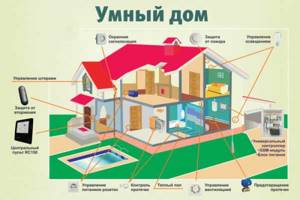
Smart House
- What kind of heat supply can there be?
- How is it organized
It has long been known that comfort does not come for free. Any attempt to provide ancillary amenities or to free yourself from unnecessary worries through the use of automation will mean increased costs. However, regardless of our desire, for a smart home, heating plays an almost important role in creating comfortable conditions, and in most cases the costs of its maintenance depend on its organization.
In the case when the equipment used, automation and control means are selected and applied correctly, then the heating system - whether it will heat a smart home, a living space or a garage - does not matter; in addition to maintaining the specified conditions, it will also be able to provide fuel economy.
This can initially be achieved by the mutual action of the heating boiler with the control center. In addition to the presence of personal safety equipment, a boiler of this type has a communication interface, thanks to which it is possible to implement smart heat supply to a country house. In its most primitive form, this must be understood that a smart home controls heat supply depending on the temperature achieved in the room based on signals from sensors.

Elements of a heat supply control system in a smart home
A good option for similar control is temperature control of the coolant. But with all the advantages of such a heat supply system, there are other, much better approaches to organizing heating work. Currently, weather-compensated heating control is considered promising.
How is it organized
With a similar approach, in addition to everything, an external temperature sensor is also used in addition to the home temperature sensor. As a rule, a weather-dependent heat supply regulator will work with one external sensor, but the use of two makes it possible to achieve more accurate mode maintenance and even self-adaptation of the system.
Weather-compensated controller with thermal converter
The weather-dependent heating system controller does not stop operating based on the programmed curve of correspondence between the temperature of the coolant and external conditions. In its most primitive form, it looks like this - if it gets colder outside, then the temperature of the water in the system increases, if it gets warmer, it decreases.
One of the base points for weather control of heat supply can be a temperature of plus twenty degrees - at which the temperature of the coolant is taken equal to that around it, and the heating is practically turned off.
A similar approach to organizing heat supply should also include zonal management, i.e. in individual places the temperature must be additionally adjusted in relation to the specific one using an external sensor. If, for example, a lot of people have gathered in one of the rooms, due to which it has become hotter, then the system detects a local increase in temperature relative to the one set by the atmospheric heat supply regulator and makes a correction in this zone.
The use of two sensors - outdoor and indoor, in addition to saving fuel, reduces the inertia of the system, which increases its effectiveness and will also provide an additional reduction in maintenance costs.
Very often, the most correct choice for organizing heat supply work will be the use of heating technologies characteristic of a smart home. In this case, you can achieve both an increase in the level of comfort in the house and savings on heating costs.
Definition of initial conditions
First of all, it is necessary to decide on the statement of the problem, that is, on the functionality of the system. Let's say we have a one-room apartment, which can be divided into the following zones:
- Tambour.
- Hallway.
- Toilet combined with bathroom.
- Kitchen.
- Living room.
Task: to automate the control of lighting, boiler and ventilation system.
Let's set tasks for each of the zones.
Tambour
In this case, you can automatically turn on the light when approaching the front door. That is, you will need a motion sensor. In this case, it is necessary to take into account the level of illumination; accordingly, the automation should operate only in the dark. To do this, you will need a GY302 sensor or a similar one (we did not include it in the review, but finding a description will not be a problem). Turning the light bulb on and off (after a time specified in the program) can be entrusted to a low-power solid-state relay, for example G3MB-202P, designed for a load current of 2 A.
Hallway
Lighting control in this area can be organized according to the same principle as in the vestibule. You can add the light to turn on when you open the front door. A standard door reed switch is suitable as a sensor.
Toilet and bathroom
The turning on of the boiler can be associated with the presence of owners in the apartment. If no one is present, the automation forcibly turns off the water heater using the SSR-25DA module. There is no point in monitoring the heating temperature, since these devices turn off automatically when a specified threshold is reached. Lights and hoods should turn on automatically when a person enters the area, and turn off after a certain time if no movement is detected.
Kitchen automation
The lighting control for this zone can be left manual, but it can be duplicated automatically, turning off the light if movement is not detected for a long time. When using an electric or gas stove, the hood should turn on and turn off some time after cooking. You can control the operation of the hood using a temperature sensor, which detects the increase in temperature when the stove is turned on.
Living room
In this room, it is better to control the lighting manually, but you can implement the ability to automatically turn off the light when there is a sufficient level of illumination.
The given example is rather arbitrary, since everyone develops the algorithm for the operation of a Smart Home depending on personal preferences.
Features of thermoregulation
In conclusion, we will give some recommendations for heating control. The greater inertia of this system should be taken into account. There is a high probability that control by simply turning the heating on and off, in accordance with a given temperature range, can create quite uncomfortable conditions. In this case, you should use the PID regulation algorithm; a library with its implementation for Arduino is available on the Internet.
Without going into details, we can describe the operation of this algorithm as follows:
- An analysis is made between the required and current temperature in the room, and based on the result, a certain power of the heating system is set.
- Constant heat losses are taken into account. They may depend on the outside temperature or other factors. Therefore, when the set temperature is reached, the heating is not turned off completely, but is reduced to the level necessary to compensate for heat loss.
- The last factor influencing the operation of the algorithm takes into account the inertia of the heating system, which does not allow the temperature to go beyond the set range.
Are you interested in this area and want to ask a question about it?
Fill out the form below and we will answer you!
By filling out this form and clicking the “Ask a question” button, you agree to the site’s privacy policy.
GSM smart home heating control circuit
Usually you can install the system yourself. This requires checking the condition and analyzing the capabilities of existing equipment
It is also important to correctly select the missing components. Typically, a set of control devices is built from a single block, which is the connecting link between all components of the heat supply
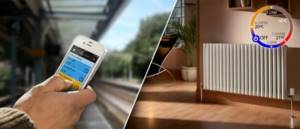
It must be installed subject to the following conditions:
- The control unit should be located at a distance of no more than 300 meters from the user. To increase the distance, radio-controlled modifications are purchased, coordination is connected via the Internet or cell phone.
- The use of a controller based on heat supply control boards ensures the installation of additional functions.
- A careful selection of the location in the house for installation of the control unit is carried out.
Security systems
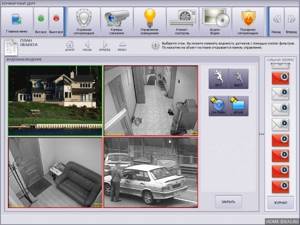
Very often, the creation of such a system begins with the desire of the owner of an apartment or house to control what is happening around him. Video cameras are installed in the right places, the signal from which is transmitted directly to the computer. In this way, all information can be stored on the hard drive and rewritten, for example, after ten days. If you have such a desire, you can enable remote access. So, while at work, you will know exactly what is happening near your home.
Another very convenient thing is the lock control. You can configure it to open or close from the control panel or smartphone. This function is very convenient, but it also has its pitfalls. Examine the lock carefully; it must be mechanically accessible. Otherwise, in the event of a power outage, you will not be able to get in or out of the house.
Heating system in a smart home, smart boiler and more
The air temperature in the house depends on the efficient operation of heating devices, the heat output of which must compensate for the thermal losses of the building; the level can vary depending on weather conditions: wind speed, humidity, time of day.
A simple relationship arises: the higher the heat losses (or, the worse the weather), the greater the heat transfer the heating devices must provide and the greater the amount of heat the heating boiler must produce.
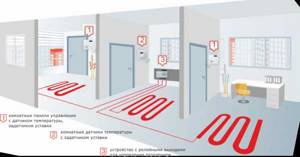
You can control the operation of the boiler manually by increasing or decreasing the fuel supply to the combustion chamber. But, you see, it is better if the heating boiler can determine for itself how much heat it needs to generate and how much fuel it needs to burn for this.
Automatic control system - the first step towards a smart boiler
Modern heating boilers in Smart houses are equipped with automatic control systems that can adjust the intensity of fuel combustion depending on the actual need for thermal energy.
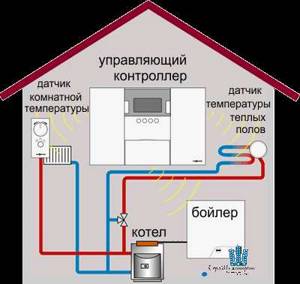
However, the response to changes in weather conditions of a conventional boiler may be delayed by several hours, depending on the degree of inertia of the heating system. The fact is that the automatic control system of heating boilers (let’s call them ordinary, as opposed to “smart” heating boilers) is overwhelmingly configured to change the temperature of the water in the return line: the water in the return pipeline cools down more, the fuel supply to the combustion chamber increases, the temperature the return flow is higher, the fuel supply to the combustion chamber decreases.
In turn, the coolant cools down faster, the lower the air temperature in the heated room.
Another important detail: a quick response of the boiler to changes in air temperature is only possible when using heating devices with a small internal volume, for example, aluminum or bimetallic radiators.
Video - Bitherm boiler with a movable grate and a smart control unit
Smart heating boiler
The operation of the smart boiler is controlled using a thermostat with a temperature sensor installed in one of the rooms. The principle of operation is extremely simple: using a thermostat, the desired temperature is set, upon reaching which the boiler turns off. When the temperature drops, the boiler is switched on and the process is repeated again.

By placing the temperature sensor outside, you can set the boiler to operate “advanced”: the outside air temperature has dropped, the boiler operates in a more intensive mode.
The timer in the smart boiler is designed to select intensive and moderate operation modes. So, for example, at night, a slightly lower temperature is more comfortable, about 2-3 degrees compared to the daytime temperature. In this case, at night you can turn off the water heating in the boiler. The mode of moderate operation of the boiler can be programmed during the daytime, when all the inhabitants of the house are at work. The boiler operating modes can be set during the day, during the week, month and even year.
For this purpose, the smart boiler is equipped with a self-diagnosis system.
Boiler self-diagnosis system
The boiler self-diagnosis system allows you to identify from 10 to 40 (depending on the boiler model) faults, a number of which can be eliminated automatically. Information about detected faults is displayed on the display and stored in the device’s memory.
All this makes the operation of smart boilers not only convenient, but also safe, eliminating the possibility of emergency situations, such as a decrease in coolant temperature below a critical level, a decrease in draft, a drop in pressure in the gas pipeline network and a number of other equally dangerous situations that cannot be excluded during boiler operation .
"Smart home" - smart heating

No matter how efficiently the boiler works, to ensure truly comfortable conditions in the house you need controlled heating devices that can respond to changes in room temperature. To do this, radiators are installed in the heating system, equipped with thermostats and servo drives that change the coolant flow depending on the ambient temperature.
Let's sum it up
The heating system of a smart home can be based on a heating boiler equipped with a self-diagnosis system and weather-dependent automation, the operation of which is only effective in conjunction with radiators equipped with thermostats and servos.
umniedoma.ru
Turning on the heating at a certain time
You can set your arrival time in advance. This option impresses with its simplicity and low cost.
All we need from automation is a time relay. It is enough to install a timer in a circuit with an electric heater and set the required switching time.
I recommend: How to properly arrange additional heating
Let’s say, planning to arrive at the dacha at eight in the morning, we’ll set the relay to five. In three hours, the air in the house is guaranteed to warm up.
In order to save money, heating cannot be turned on in all rooms (unless, of course, your hacienda has only one room). Bringing the temperature in the living room and bathroom to +10 will be sufficient.
Even with a slight frost, this temperature will feel comfortable.
Modern time relay models can be installed even on an annual cycle
And in order not to waste electricity if the trip is disrupted, we will program the device to turn off the heating, for example, at lunch.
The disadvantage of this option is obvious - it is strictly time bound. Yes, and a good time relay with a programmable cycle for a month costs and is no longer so cheap.
Smart home heating circuit and control systems, photos and videos
A smart building implies a resource-efficient office or retail structure that uses all the used sources of vital amenities in a practical and correct manner. Smart home - heat supply, electrical energy and more, as well as a moderate effect on the external environment.
In other words, this type of building is characterized by the ideal production, storage and management of energy in a domestic project. Today, resource-efficient houses can be not only country houses, houses outside the city or equipped summer cottages, but also traditional apartments.
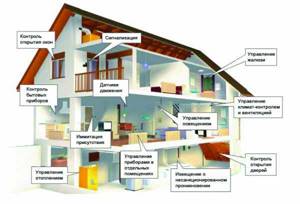
Type of smart home system
In conditions of sharp temperature rises throughout the year, the issue of heat supply to residential premises is quite important. Most residents complain that during cold weather, heating radiators provide very little heat, and when the heat comes, they heat up to the fullest. What ends up happening is that people overpay for things they don't need. If your heating system is in order, but you are familiar with this not very pleasant phenomenon from hearsay, then it would be useful for you to learn about how the heating system in a smart home can be arranged.
Specifics of smart heating
The very concept of a smart home regarding heat supply presupposes comfortable living of a person in a consistently warm room with low price costs. This means that the heating system should be designed in such a way that there is no need to pay again for something that you do not use. However, for any arrangement, especially profitable heat supply and resource-efficient, you just need to invest financially - but still, you must not forget that such a decision will very soon be fully justified!
So, the use of automation to operate the heating system of a smart home is the basic principle for creating comfortable living conditions, and also for saving fuel, provided that the automation itself, along with the control components, are correctly selected and used. A similar thing can exist in the joint productive activity of a heating boiler with a control center: with the help of the communication interface and safety tools of the boiler, heat supply is realized.

Heating circuit for a smart home
The system itself changes the heat supply temperature, looking at indicators from specialized sensors in the room.
In particular, this option is suitable for a country house. The optimal solution here is the temperature regulation of the heating medium.
Promising direction in the organization
On the other hand, there are many other ways to organize heat supply in a smart home. For example, the system may be dependent on the weather outside the window. This approach requires the presence of not only a sensor designed to measure the temperature specifically in the room, but also a sensor focused on external temperature indicators. To accurately maintain the operation of such heating, it is best to use two external meters.
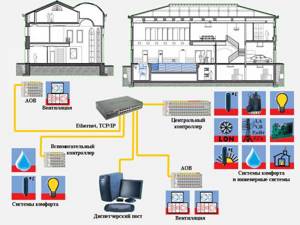
Control circuit
The operating principle of the corresponding controller is the curve of the dependence of the temperature of the coolant on the weather. In other words, when cold comes outside, the water in the system heats up, and when it’s hot outside, it gets cold. The mark of +20 on the Celsius scale can be taken as the base point for the coolant, so that at this point the temperature of the system is figuratively speaking equal to the external one, and the excess heat output and heating of the premises ends.
To approximate the level of comfortable heating in a smart home, it is possible to configure the heating so that the apartment temperature has local characteristics. In other words, in individual places it can be adjusted in relation to the one set by an external sensor. If there are many people in one of the rooms who, for real reasons, are heating the room, the system can calculate the increase in temperature in this zone, compare it with the one set on the weather controller, and then distribute the heat throughout the apartment relative to the adjustment of the indicators in this room.
Likewise, the provided arrangement of a heating system in a smart building can definitely be called a promising direction for creating comfort in your home and also reducing the monetary costs of paying for heating.
Don't know the answer to your own question? Ask our expert: Ask
Types of systems
You can make a smart home using different schemes, depending on the type of equipment and communication protocol. Software and hardware systems for smart homes are conventionally divided into several types.
Wired
| System Features | pros | Disadvantages and possible problems |
| The components communicate directly via wired connections. The sensors send signals through them to the control unit, and the end devices receive control commands. | High response speed, eliminating problems with transmitting pulses in a wireless environment when the signal strength is insufficient. The data bus is not overloaded with many pulses. | Wiring is required; communications are planned during the construction phase of the house. Installation is complicated and requires significant labor costs. A complete rework of the complex or its segment may be required. |
Wireless
| System Features | pros | Disadvantages and possible problems |
| Devices are connected to control units via wireless channels. | No wires are needed, the solution is suitable for almost any room configuration without modifying them. | Some peripheral devices need to replace batteries (although modern “smart devices” can operate on one battery for up to several years). Communication via radio channel somewhat limits the capabilities of the system and its scale in space. It is necessary that all devices are within the network coverage area. This problem is partially solved by the use of mesh networks. When operating via IR communication, devices must be within line of sight of each other. |
Centralized solutions
| System Features | pros | Disadvantages and possible problems |
| Equipped with a central control unit. The unit controls and synchronizes the interaction of smart home components through a common bus and ensures the execution of user commands. | The head unit integrates and coordinates network elements. | The functionality depends on the hardware capabilities of the control module and the software built into it. If the “brain” of the system fails, it loses its functionality. |
Decentralized
| System Features | pros | Disadvantages and possible problems |
| The devices operate on the same network, but without a single control center. Each element is an independent server. | There is no danger of losing functionality due to problems with the central unit. | There are many controls, which can make configuration and debugging more complex and confusing. |
Open protocol network
| System Features | pros | Disadvantages and possible problems |
| There are various manufacturers that use specific communication protocols and command formats in their equipment. | You can pair equipment from different vendors without fear of running into incompatibility issues. | In some cases, it may be necessary to adapt circuit elements due to the nuances of protocol implementation. |
Equipment with closed protocol
| System Features | pros | Disadvantages and possible problems |
| The developer implements devices using its own protocol and command language. Only vendor-created (or vendor-certified) elements may be used. | All components are highly compatible (usually backwards compatible with older versions of peripherals). | Third-party equipment will not be able to connect to the system. In certain cases, this problem is solved by the developer opening an API. |
Main elements and sensors:
- main block (may not be in a decentralized scheme);
- water leakage sensors;
- smoke sensors;
- temperature sensors;
- motion and light sensors;
- surveillance cameras;
- smart home ventilation;
- remote opening/closing system for blinds;
- media management;
- control devices for heating, electricity and water supply;
- there may be transmitters of information from water and electricity meters (such projects are being implemented, for example, by Moscow as part of the introduction of innovations in the housing and communal services sector);
- software or hardware gateway for connecting and controlling externally and transmitting alerts to the owner;
- smart sockets and switches;
- alarm system.

In a number of schemes, sensors and other elements serve as gateways for transmitting wireless signals to neighboring network devices.
Heating control devices
Programmers and thermostats
The key parts of the heating control system are thermostats and programmers. They are electronic devices, in some modifications equipped with a control panel, which helps control the operation of the boiler. In addition, such a device allows you to synchronously change the indicators in two connected components.
In addition, an additional function of the programmers is adjustment using SMS from a cell phone or commands transmitted via the Internet.
You can select a suitable modification of this device based on a set of basic characteristics, which may include:

- remote communication between components using radio transmitters;
- operation of radiators (depending on the settings) can be in comfortable, normal or economical mode;
- the number of connected circuits can be increased by connecting additional modules;
- heating control via mobile phone;
- data transfer via SMS, etc.
These functional features make the presented elements quite convenient and in demand.
Zone devices
Such heat supply control elements are installed directly on radiators and boilers. In this case, adjustment by the system is carried out via Internet connection. These devices are represented by electronic thermostats. They are capable of changing the water temperature in each individual battery or the system as a whole. The differences between these thermostats are their ease of installation and affordable price. At the same time, the complexity of setting up the system is reduced, especially since they do not require a separate control cabinet. Zone devices allow the use of several thermostats that are connected to one control unit.
Heating remote control modules
The function of remote control of the heating network can be provided by special modules included in the package with shut-off and control valves and programmers.

Internet management
Control using the Internet block is as convenient as SMS control. It features the following features:
- installation of specific software systems into a smartphone, laptop or other gadget;
- simple interface that can be easily combined with Android or Windows OS;
- unlike SMS blocks, restrictions on the number of connected users have been removed;
- Parameters are adjusted where there is access to the Internet (you do not need to use roaming for this).
When traveling abroad, experts advise not to use roaming functions to regulate heat supply via the GSM system, as this can be fraught with large financial costs. In this case, the right decision would be to entrust control of the heating system to friends you trust.
Which automatic heating system is suitable for a summer house?
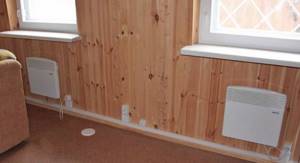
It is most convenient to automate heating in a dacha with electric radiators
In most country houses in Russia, the choice of heating types is small. As a rule, this is an ordinary → coal or wood stove (the link tells about building a stove at the dacha with your own hands), at best a solid fuel or other boiler, electric heaters.
But even with systems running → diesel fuel (the link describes the heating device from a diesel boiler), or gas, automatic switching is not always provided.
The only real type of automatic heating for a summer house will be the use of electricity. But since the operation of such systems is expensive, we will provide electric heating as auxiliary.
That is, electricity will heat one or two rooms to a comfortable temperature before our arrival, and ensure the functioning of the water supply and sewerage system. And upon arrival, in a comfortable environment, we will start the main heating system in manual mode.
But no matter how smart the house is, it will not be able to anticipate the visit of guests.
How the heating system works Smart home
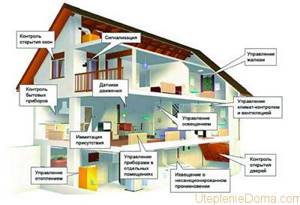
Approximate diagram of the “smart home” system
Thermal conductivity of walls and ceilings, the quality of windows, the presence of drafts and air humidity, the type of heating system and the method of heat supply - all this affects the indoor climate.
Modern heating systems can differ functionally: these are classic radiators, “warm floors”, and convector heating. In country houses, individual boilers are installed for heating and providing hot water; in an apartment, a boiler can be used.
All this can be controlled by a single system, which is called a “smart home”. This is a control computer unit associated with home appliances, as well as with an internal and external temperature sensor system. According to the information from the sensors and the set mode, such a system is capable of lowering or increasing the temperature in the room. In addition, it can regulate the amount of hot water ready for use in the boiler.
Advantages and disadvantages
Among the advantages of owners of the Smart Home system are the following:
- the room will always maintain the set temperature;
- easy to control electricity consumption;
- reduction in the volume of gas and electricity consumed - it is noted that expenses are reduced by approximately 30% during the heating season;
- the owner will be immediately notified if any deficiencies are detected by the system;
- It is possible to combine the operation of several devices and control them simultaneously.
The main disadvantage of this system is its high cost. To install such a complex yourself, you must have special skills. The same goes for repairs.

Heat generator
These words mean not only the heating boiler itself, but also its hydraulic piping, as well as pumping and mixing equipment.
Modern heating systems for individual residential buildings have such a feature as a rather heterogeneous and variable nature of heat consumption from the boiler room. The above applies to both the coolant temperature and its flow rate over time. A warm floor requires a coolant with a temperature of 35-40 °C, for a hot water boiler - up to 85 °C. The coolant flow can be constant (for a heated floor) or sharply variable - for a swimming pool heating system or hot water boiler. On the other hand, any heating boiler has restrictions on the minimum temperature of the coolant and does not respond in the best way to sudden changes in its temperature over time. It is possible to solve the problem by using a collector scheme for constructing a boiler house with separate pumping and mixing groups for various heat consumers.
Research conducted by the National Bureau of Standards (USA) in 1988 showed that in partial load mode, the use of a multi-boiler installation with complete shutdown of idle boilers increases efficiency. boiler room up to 25-30%. From the practical experience of our company, the use of two boilers is economically justified starting with a power of 70-100 kW.
The principle “one large boiler is worse than two small ones” is also true from the point of view of the reliability of the entire boiler installation as a whole.
An additional up to 3-5% fuel savings is provided by a shut-off valve for exhaust gases that closes the boiler chimney when the burner is not working.
Arduino
Zhenya made the first version of the Smart Home two and a half years ago using arduino.
Arduino is a small board with a microcontroller, memory and contacts to which you can connect light bulbs, motors, sensors and basically anything that runs on electricity. You write a program in C++, load it into the memory of the Arduino microcontroller - and it controls all connected devices. This is how cool gadgets are created - a watering system for a summer cottage, for example, or a robot that brings you slippers.
The first theme that Zhenya made on Arduino was a toy. Two sensors, two participants. Everyone holds their hand over their sensor. When the toy beeps, you need to quickly remove your hand. The toy measures reaction time up to 100 seconds and tells you who the champion is. We fought with my wife. Convenient - whoever loses washes the dishes).
When everything became clear with arduino, Zhenya decided, of course, to make a Smart Home (he is an electronics engineer). I connected a security system (motion sensor and door opening sensor) and a thermometer (temperature and humidity sensor DHT11) to the arduino and was not satisfied. Communication between all devices was via a 433 MHz radio channel and turned out to be unstable. Zhenya struggled with radio signals for about 2 months, and then decided not to fight, but to remake the smart home server on a Raspberry Pi.
How to make lazy beds - basic tips
In this approach, preparation for future planting is very important - it is advisable to do this in the fall, when you can collect material for mulching the soil (you need to cover it with straw, sawdust, cones, etc.), which, in turn, will prevent weeds germinate in an area with such cover.

Do-it-yourself lazy bed: step 1-4 We determine the height of the board of all sides, depending on the location of the bed installation. We connect the boards with a screwdriver and remove the clamps. We turn the bed over and outline the installation location, focusing on the lighting conditions for future seedlings
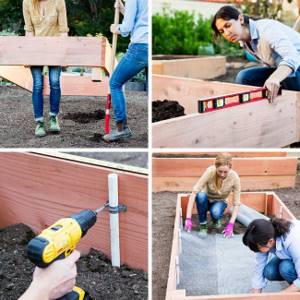
Do-it-yourself lazy bed: step 4-8 We firmly install the bed by burying the corner beams in 12-15 cm holes. We check the sides of the bed with a building level (for normal operation of the future irrigation system). We attach PVC pipes to the sides from the inside (for hoops with mesh or film against bad weather and birds). Compact the soil and line the bottom with a metal mesh against moles (and, depending on the materials and purpose of the bed, with geotextiles)
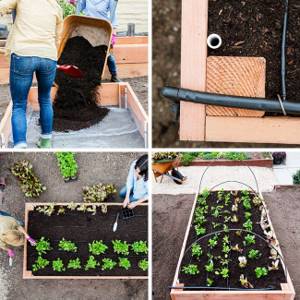
Do-it-yourself lazy bed: step 9-12 Fill in the soil of the desired type. We attach the hoses of the irrigation system. We plant seedlings. If necessary, we install hoops for the awning. Ready!

Photo of soil mulching
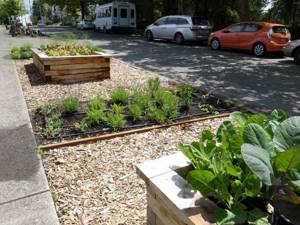
Mulch is also useful for filling the areas between the beds.
- Install your own irrigation system. It is not necessary to choose the most expensive systems available in stores. In the case of such vegetable gardens, those from which you only need to press a button are quite suitable - and there will be no need to water it yourself. Watering will allow you to make beautiful beds: green and lush. It is also worth noting: watering can be done infrequently, but abundantly, giving the plants the necessary moisture until your next visit.
- A tool for working in the garden is the key to saving time. Therefore, it is worth choosing one piece of equipment for many years. It may include not only the usual shovel and buckets, but also various little things that will make your work easier. Also, find a place for your inventory in advance.
- At the beginning of the planting season, dig up the ground once and prepare it for future seedlings or seeds. Plant the plants and don’t disturb the earth anymore: mulching will do its job and protect you from weeds. All that remains for you before harvesting is to water the beds in your dacha on time.

Smart beds only need to be dug up once. They do not need weeding - mulch will prevent weeds from sprouting

Tomatoes on a trellis in smart beds

The metal sides of the beds should be dug into the ground to a shallow depth.
This is an interesting and effective method that is suitable for both lazy gardeners and experienced gardeners who know their business. A garden bed of this type will be worth the effort and can bring a lot of convenience.
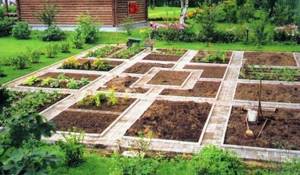
French vegetable garden with lazy beds
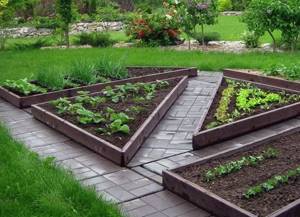
Lazy beds (photo 2)

Flowers in a small garden design
Pros and cons of the Smart Home heating control system
Heating control using a smart home allows you to achieve the following:
- the climate in the house or any selected room will exactly correspond to the owner’s feeling of comfort, in accordance with the operating program of the heating devices chosen by him;
- automated control of the heating system can significantly reduce energy consumption;
- Intelligent control of household subsystems at home will allow you to control them remotely and not worry about possible breakdowns (the computer will react to a malfunction).
The downside of such technologies is still their availability due to the fairly high cost of equipment and system installation.
Find out the cost of repairs
Why do clients choose us?
Heating and Repair
We have the best prices!
Heating installation includes boiler fasteners, batteries, pressure-increasing pumps, thermostat manifolds, expansion tank, pipes, air vents, and connection system. The home heating assembly has certain devices. On this web project page we will try to help determine the necessary structural components for the mansion. Each node has a big role
This is why the compliance of all parts of the system is important to plan carefully.
The now familiar concept of “smart home” must be understood not only as a cottage, country house or dacha. A city apartment, an office, as well as many other types of premises are quite suitable for this understanding. If we consider the heating system from this point of view, then with this approach to it it is necessary to implement several fundamental principles. When we say smart home, heating in this case should provide comfortable living conditions or save costs on its maintenance.
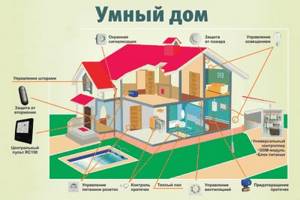
Benefits of full heating automation
Before discussing the benefits of smart heating, there is something of an initial disadvantage for the end user.
When setting up a system of this kind, you will have to spend money on purchasing the required components, as well as on installation and configuration.

Not the most expensive and advanced set of “smart” heating, however, it allows you to organize a completely effective home automatic control system
Of course, the possibility of doing everything yourself cannot be ruled out. However, to implement this option, you must have the status of a highly qualified specialist or a jack of all trades. But the costs of setting up the system are ultimately compensated in full.
Average statistical calculations showed up to 30% savings in heating costs during the cold season. Thus, the “smart” heating device pays for itself in the short term.
Among the obvious advantages of the technology is the ability to control all parameters directly from your phone or tablet.
Modern smartphones allow the installation of special applications through which monitoring and adjusting the parameters of the heating system is carried out.

A smartphone and the ability to remotely create a comfortable environment in the home are a reality of modern life. At the same time, it is possible to control heating from other popular digital devices
An obvious advantage of such systems is the factor of accurate and stable temperature background.
Moreover, using the application, you can set the desired mode at a certain time of the day: cooler at night for a restful sleep, and a gradual increase in temperature an hour before returning from work.
When the inside of the room is “not cold - not hot,” that is, the temperature background that is optimal for the body is noted, the risk of colds is sharply reduced. In such conditions, the body is in an active phase, the person feels a state of comfort.
The convenience factor is also an advantage. There is no need to turn the taps or measure the temperature with a thermometer. All these actions will be performed automatically with high accuracy. In addition, it becomes possible to take into account the energy consumed. And this, again, is savings.
The fence is my highlight
It’s not without reason that they say that the original fence is the highlight of any country building. Show the taste and sense of style of the owner, make the site bright against the background of other buildings; a fence can do all this if it is designed in an original way.
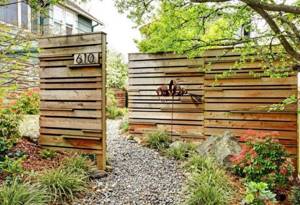
The pointed ends of a wooden fence can be turned into a set of multi-colored pencils. You just need to paint the tree in different colors.
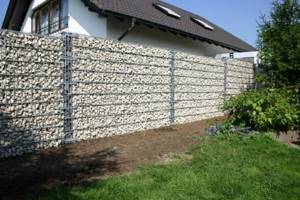
The trellis in the garden will change its appearance after applying paints and stencil designs to it.

Plastic bottles can be used to create a variety of animals, birds and trees. You only need to repaint them in the appropriate color.
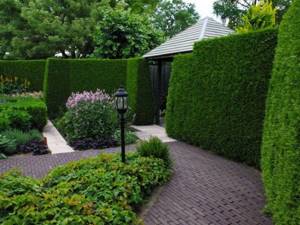
Do not throw away corks, because with their help you can create unimaginable patterns and paintings. At the end the work should be painted.
Read: Weaving from newspaper tubes for beginners: photos, blanks, weaving methods, secrets of successful weaving
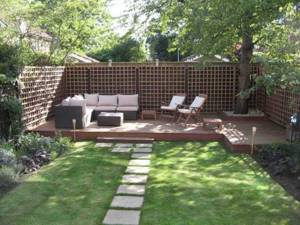
The log can be turned into a bird feeder.

Do you have a lot of free space on your property? Make a pond. For this:
- dig a hole of any size;
- seal the surface;
- make sure that the ground does not absorb water;
- decorate the pond with natural stones.
When choosing stones, make sure they match the size of the pond. It is not practical to decorate a large pond with tiny stones. In general, creating a lake is not such a difficult process. The time and effort spent will not go to waste.
Beautiful and comfortable
A lazy bed is a completely new approach to gardening, which will allow seedlings to grow on their own and produce several times more yield. It is based on a rule that states that digging and weeding the soil is prohibited, except for its preparation and planting itself. Even though constant weeding can remove weeds and fluff up the soil, sooner or later it will dry out and will not be able to provide sufficient moisture for crops.

Stone fences are an easy way to build a foundation for a garden bed on uneven terrain.

Compact beds in urban areas

Raised beds with trellises on a gravel plot




